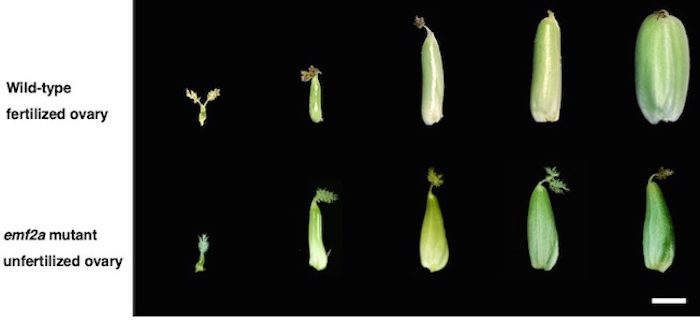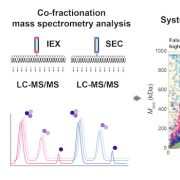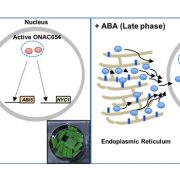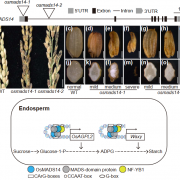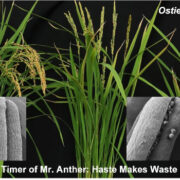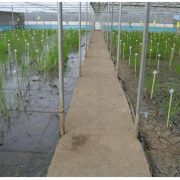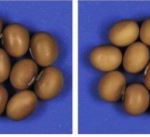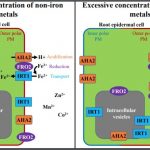Repressor of Endosperm Formation in Rice
Tonosaki et al. explore how the Polycomb Repressive Complex 2 component EMBRYONIC FLOWER2a represses rice endosperm development both before and after fertilization. The Plant Cell (2020) https://bit.ly/33DQdqW
By Kaoru Tonosaki and Tetsu Kinoshita
Iwate University and Yokohama City University
Background: The endosperm is a tissue that provides nourishment for embryo development in seeds and for seedling growth after germination. Endosperm development is regulated in a complex manner by epigenetic mechanisms such as histone modifications. One repressive histone mark, H3K27me3, is mediated by PRC2 (Polycomb repressive complex 2). PRC2 is largely conserved in mammals and plants and functions in several developmental processes by repressing gene transcription. In Arabidopsis, PRC2 represses endosperm development both before and after fertilization. However, the role of PRC2 in endosperm development in monocot species is still unclear.
Question: We wanted to know how PRC2 is involved in endosperm development and to identify its direct target genes in rice.
Findings: Mutants of EMBRYONIC FLOWER2a (encoding a component of PRC2) in rice showed nuclear divisions in the central cell before fertilization. The divided nuclei were associated with the cytosol, which accumulated starch granules and protein bodies. After fertilization, the mutant also displayed delayed developmental transitions in the endosperm. Using ChIP-seq analysis, we identified direct targets of PRC2 in the endosperm. These targets included over 100 transcription factor genes and approximately 200 paternally expressed imprinted genes. Our results shed light on how EMBRYONIC FLOWER2a-containing PRC2 controls endosperm developmental programs both before and after fertilization.
Next steps: Identifying key regulators that repress nuclear divisions in the central cell and the developmental transitions in endosperm will require more detailed investigations.


